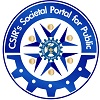PhD Course Structure
Semester I |
Semester II |
||||
Course No. |
Course name |
L-T-P-C |
Course No. |
Course name |
L-T-P-C |
| ENG-CBRI-1-1109*$ | Research Methodology *$ | 1-0-0-1 | ENG-CBRI-1-1138$ | Rock Mechanics$ | 3-0-0-3 |
| PHY/ENG-CBRI-1-1119* | Fundamentals of Engineering Geology* | 3-0-0-3 | ENG-CBRI-1-1146* | Fundamentals of Structural Engineering* | 3-0-0-3 |
| ENG-CBRI-3-1101 | Wind effects on building structures (WEBS) | 3-0-0-3 | ENG-CBRI-1-1148* | Fundamentals of Soil Mechanics* | 3-0-0-3 |
| ENG-CBRI-3-1103 | Structural Response Control for Seismic Protection | 3-0-0-3 | ENG-CBRI-2-1102$ | Advanced Seismology$ | 3-0-0-3 |
| ENG-CBRI-3-1105 | Computational Nonlinear Mechanics | 3-0-0-3 | ENG-CBRI-2-1110$ | Landslide Disaster Mitigation$ | 3-0-0-3 |
| ENG-CBRI-3-1107 | Continuum Mechanics & Finite Element Analysis | ENG-CBRI-3-1102 | Re-engineering of Structures | 3-0-0-3 | |
| ENG-CBRI-3-1109 | Corrosion Control in Reinforced Concrete Structures | 2-0-2-3 | CHE-CBRI-3-1102 | Advanced Environmental Analysis & Management | 3-0-0-3 |
| ENG-CBRI-3-1111 | Applied Soil Mechanics | 3-0-0-3 | CHE-CBRI-3-1104 | Introduction to Polymer Materials | 3-1-0-4 |
| CHE/ENG-CBRI-3-1113 | Advanced Instruments in Materials Research | 2-0-2-3 | CHE-CBRI-3-1106 | Plastics and Composites | 2-1-0-3 |
| CHE-CBRI-3-1101 | Frontiers in Building Materials | 3-0-0-3 | CHE-CBRI-3-1108 | Geopolymers | 3-1-0-4 |
| CHE-CBRI-3-1114 | Nanotechnology and Analytical Techniques | 3-0-0-3 | |||
* for PhD students with non-civil engineering background & desirous of working in Civil Engineering area
Common course for MTech & PhD
Semester I |
|||||
Course No. |
Course name |
Faculty |
|||
| ENG-CBRI-1-1109*$ | Research Methodology *$ | S.K. Bhattacharyya & Abha Mittal | |||
| ENG-CBRI-1-1119* | Fundamentals of Engineering Geology* | S.Sarkar, D.P. Kanungo, PKS Chauhan and M. Samanta | |||
| ENG-CBRI-3-1101 | Wind Effects on Building Structures | A.K. Mittal & S. Behra | |||
| ENG-CBRI-3-1103 | Structural Response Control for Seismic Protection | Navjeev Saxena & SK Panigrahi | |||
| ENG-CBRI-3-1105 | Computational Nonlinear Mechanics | S.K. Bhattacharyya | |||
| ENG-CBRI-3-1107 | Continuum Mechanics & Finite Element Analysis | S.K. Bhattacharyya, Ajay Chaurasia and S.K. Singh | |||
| ENG-CBRI-3-1109 | Corrosion Control in Reinforced Concrete Structures | S.R. Karade & P.C. Thapliyal | |||
| ENG-CBRI-3-1111 | Applied Soil Mechanics | Manojit Samanta, P. Mohanti and A. Pain | |||
| ENG-CBRI-3-1113 | Advanced Instruments in Materials Research | B. Singh, Rajni Lakhani and Harpal Singh | |||
| CHE-CBRI-3-1101 | Frontiers in Building Materials | A.K. Minocha, L.P. Singh, P.C. Thapliyal and Neeraj Jain | |||
Semester II |
|
||||
Course No. |
Course name |
Faculty |
|||
| ENG-CBRI-1-1138$ | Rock Mechanics$ | R.K. Goel & RD Dwivedi | |||
| ENG-CBRI-1-1146* | Fundamentals of Structural Engineering* | S.K. Bhattacharyya | |||
| ENG-CBRI-1-1148* | Fundamentals of Soil Mechanics* | Pradeep Kumar | |||
| ENG-CBRI-2-1102$ | Advanced Seismology$ | P.K.S. Chauhan & Abha Mittal | |||
| ENG-CBRI-2-1110$ | Landslide Disaster Mitigation$ | S. Sarkar & D.P. Kanungo | |||
| ENG-CBRI-3-1102 | Re-engineering of Structures | S.K. Singh & Ajay Chaurasia | |||
| CHE-CBRI-3-1102 | Advanced Environmental Analysis & Management | A.K. Minocha, L.P.Singh, PC Thapliyal and Ibrahim Sohel | |||
| CHE-CBRI-3-1104 | Introduction to Polymer Materials | B. Singh, Rajni Lakhani & Harpal Singh | |||
| CHE-CBRI-3-1106 | Plastics and Composites | B. Singh, Rajni Lakhani & Harpal Singh | |||
| CHE-CBRI-3-1108 | Geopolymers | B. Singh, Rajni Lakhani & Harpal Singh | |||
| CHE-CBRI-3-1114 | Nanotechnology and Analytical Techniques | L.P. Singh, P.C. Thapliyal , A.K. Minocha & Neeraj Jain | |||
* for PhD students with non-civil engineering background & desirous of working in Civil Engineering area
Common course for MTech & PhD
| Areas of Research | |
| Structural Engineering |
1. Materials – Cement & Concrete 2. Wind effects on buildings 3. Earthquake effects on building 4. Impact effect on buildings 5. Structural restoration 6. Structural health monitoring 7. Fluid-structure interaction 8. Computational mechanics 9. Corrosion control in RCC structures |
| Geotechnical Engineering |
1. Geotextiles 2. Ground improvement techniques & deep foundation 3. Environmental geotechnique 1. Slope Stability analysis 2. Control Measures for Landslides |
| Chemical Sciences |
1. Polymeric material 2. Composite material |
| Environmental Engineering |
2. Use of industrial wastes 3. Control of air pollution 4. Solid waste management |
| Geological Sciences |
1. Landslide Hazard & Risk Assessment 2. Landslide Instrumentation & Early Warning System 3. Landslide modeling 4. Remote Sensing & GIS Applications to Geo-hazards |
The Syllabi
SEMESTER I
ENG-CBRI-3-1101 Wind Effects on Building Structures (WEBS) L-T-P-C 3-0-0-3 |
|
Syllabus
|
Introduction to wind engineering, wind climate and wind structure including strong wind characteristics and turbulence. Structure of turbulence, probabilistic distribution of wind, extreme wind events. Aerodynamics of bluff bodies, vortex shedding and associated unsteady along and across wind forces. Analytical procedures for along wind and across wind forces. Computational aspects of wind flow around buildings. Wind interference effects. Wind Tunnel Testing and its salient features. Wind effects on buildings, Performance of existing buildings and case studies. Codal provisions- Wind resistant design of buildings, glass panels of doors, windows and facades. Introduction to International Codes. Risk, hazard and vulnerability analysis of wind sensitive structures. |
Reference Books |
1. Wind Loading of Structures by John D. Holmes, Spon Press, Talor & Francis Group 2. Wind Effects on Structures: An Introduction to Wind Engineering by E. Simiu and R H Scanlan, John Wiley and Sons 3. The Designers Guide to Wind Loading on Building and Structures by N J Cook, BRE Publication, Butterworths, London 4. Wind Forces on Buildings by Peter Sachs, Pergamon Press. |
Faculty |
A.K. Mittal & S. Behra |
ENG-CBRI-3-1103 Structural Response Control for Seismic Protection L-T-P-C 3-0-0-3 |
|
Syllabus
|
Theory of Vibration Isolation: Theory of vibration isolation-Principle of base isolation-Components of base isolation-Advantages and limitations; Linear theory of base isolation-Applications. Isolation Devices: Different isolation devices-Modeling of isolation devices-Design of isolated devices-Stability of isolation devices-Application of devices to buildings. Energy dissipation devices: Metallic Yield dampers, Friction dampers, Viscoelastic dampers, Tuned mass dampers, Tuned liquid dampers, Shape memory alloy dampers, Application to buildings. Structural Control: Introduction to control theories; Strategies-Active Control-Passive control-Hybrid control-Semi-active control. Case Studies |
Reference Books |
1. IR Hkinner, WH Robinson & KH Mcberry. An introduction to seismic isolation. John Wiley publication, 1993. 2. JM Kelly. Earthquake resistant design with rubber. Springer publication 1993. 3. LL Beranek and IL Ver. Noise and vibration control engineering. John Wiley publication, 1992. 4. DJ Mead. Passive vibration control. John Wiley publication, 1999. 5. A. Preumont. Vibration control of active structure: An introduction. Kulwer publication 1997. |
Faculty |
Navjeev Saxena & SK Panigrahi |
ENG-CBRI-3- 1105 Computational Nonlinear Mechanics L-T-P-C 3-0-0-3 |
|
Syllabus
|
Types of nonlinearities – Material, Geometric; Combined; general approach to solutions of nonlinear behaviour, initial stress and initial strain approaches; iterative approach using Newton Raphson and modified Newton Raphson methods, incremental and mixed incremental approaches, line search and Arc length methods, convergence criteria etc.; Non-linear constitutive laws, hypo and hyper constitutive laws for materials like concrete, soil, rocks etc. Elasto-plastic behaviour, material yield criteria – Tresca, Von-Mises, Mohr-Coulomb; Yield Criteria for concrete, rocks etc.; Isotropic and kinematic hardening of materials , stress path dependency, plastic stress-strain relations – Prandtl Rauss equations, Levi-Mises relations, stability of plastically deforming bodies, normality principle, plastic flow rule, plastic potential, hardening modulus, generalized elasto-plastic stress relations, solution algorithm using analytical and numerical schemes, application to typical problems. Concrete Plasticity, hardening and softening behaviour. Creep, visco-elasticity and visco-plasticity, Rheological aspects, basic and composite rhelogical models including- Kelvin, Maxwell, Bingham Models, compound models, governing differential equations and solutions, numerical schemes, solution algorithm, application to typical problems. Elasto-viscoplastic constitutive models for concrete, Introduction to fracture mechanics. |
Reference Books |
1. W.F Chen and D.J. Han, “Plasticity for Structural Engineers”, Springer-Verlag, Newyork, 1987 2. Owen and Hinton, “Finite elements in Plasticity- Theory and Practice ”, Pineridge Press, Swansea U.K., 1980. |
Faculty |
S.K. Bhattacharyya |
ENG-CBRI-3-1107 Continuum Mechanics & Finite Element Analysis L-T-P-C 3-0-0-3 |
|
Syllabus
|
Continuum Mechanics – Introduction – Vectors and Tensors, Analysis of Strains, large deformations and finite strains, Eulerian Langrangian and Almansi, Green’s and Cauchy’s strain tensors, Compatibility equations, elastic stress strain equations, generalized Hooke’s Law, Material Yield Criteria-Von-mises, Tresca, Mohr-Coloumb, Drucker-Prager etc. Finite-Element Analysis – Finite element technique, discretization, energy and variational approaches, basic theory, displacement, force and hybrid models, shape function, use of isoparametric elements, convergence criteria, numerical intergration, element formulations, 2-D elements, plate bending elements, introduction to 3-D elements, shell elements , interface elements ,boundary elements, infinite elements. Application to non-linear problems; special topics. Usage of commercial packages. |
Reference Books |
1. Timoshenko S. and Krieger S.W., Theory of Plates and Shells, McGraw Hill. 2. Chen, W.F. and Saleeb, A.F.. Constitutive Equations for Engineering Materials, John Wiley & Sons. 3. Krishnamoorthy, C.S.. Finite Element Analysis- Theory & Programming, Tata McGraw Hill Pub. Co. Ltd., New Delhi. 4. Zienkiewicz, O.C. The finite Element Method in Engineering, McGraw-Hill, London. 5. R.D. Cook, Plesha & Malkus – Concepts in Finite Element Technique 6. J.N. Reddy – Nonlinear finite element technique |
Faculty |
S.K. Bhattacharyya, Ajay Chaurasia and S.K. Singh |
ENG-CBRI-3-1109 Corrosion Control in Reinforced Concrete Structures L-T- P-C 2-0-2-3 |
|
Syllabus
|
TheoryDeterioration of concrete structures: Constituent materials, microstructures, mix design for durability, permeability, carbonation, chloride penetration, corrosion damage, sulphate attack, alkali-silica reaction, other chemical attacks, influence of types of cement on corrosion. Basics of Corrosion: Introduction to corrosion process, forms of corrosion, steel corrosion in concrete, corrosion rate measurement instruments. Condition assessment and corrosion monitoring of reinforced concrete structures: condition survey, nondestructive testing (NDT), measurement of half cell potential, resistivity and corrosion rate, permanent corrosion monitoring systems. Repair principles, materials and corrosion control measures: Patches, overlay, repair mortars, sprayed concrete, FRP wrapping, corrosion, inhibitors, surface coatings and cathodic protection. Practicals Corrosion rate measurements in laboratory – NDT and corrosion survey techniques at site – Surface coatings acceptance tests – Cathodic Protection. |
Reference Books |
1. ACI 222R-01. Protection of metals in concrete against corrosion. American Concrete Institute, Farmington Hills, Michigan, 2001. 2. Bertolini, L., Elsener, B., Pedeferri, P. and Polder, R.P., Corrosion of steel in concrete, Wiley-VCH, Weinheim, 2004. 3. Broomfield, J.P., Corrosion of steel in concrete: Understanding, investigation and repair, 2nd edition, Taylor & Francis, London, 2007. 4. Bungey, J.H., Millard, S.G. and Grantham, M.G., Testing of concrete in structures, 4th edition, Taylor & Francis, London & New York, 2006. |
Faculty |
S.R. Karade & P.C. Thapliyal |
|
ENG-CBRI-3-1111 Applied Soil Mechanics L-T-P-C 3-0-0-3 |
|
|
Syllabus
|
Foundation in soft soil: problems – estimation of consolidation and creep settlement – improvement methods – quality control in improvement methods – case study. Foundation in liquefiable soil: liquefaction potential and assessment – remedial measures – foundation techniques – case studies. Solution of foundation problems by beams on elastic foundation approach. Application of numerical methods to solve soil – foundation-structure interaction problem. Foundation design including seismic effect. Seismic design of retaining wall/retaining wall with reinforced backfill/gabion wall/gabion wall with reinforced backfill-case study. Stability analysis of landslide – different approach – types of control measures -design aspect of different control measures- case study. Foundation in soft soil: problems – estimation of consolidation and creep settlement – improvement methods – quality control in improvement methods – case study. Foundation in liquefiable soil: liquefaction potential and assessment – remedial measures – foundation techniques – case studies. Solution of foundation problems by beams on elastic foundation approach. Application of numerical methods to solve soil – foundation-structure interaction problem. Foundation design including seismic effect. Seismic design of retaining wall/retaining wall with reinforced backfill/gabion wall/gabion wall with reinforced backfill-case study. Stability analysis of landslide – different approach – types of control measures -design aspect of different control measures- case study. |
| Reference Books |
1. Soil Mechanics in Engineering Practice by K. Terzaghi, R.B. Peck, G.Mesri. Wiley Interscience Publication, 1996. 2. Geotechnical Earthquake Engineering by S.L. Kramer, Prentice Hall, New Delhi, 1996 3. Geotechnical Slope Analysis by R. Chowdhury, P. Flentje, G Bhattacharya, CRC Press, 2009. 4. Advanced soil Mechanics, B. M. Das, CRC Press, 2009. 5. Ground Improvement, M. P. Moseley & K. Krisch, Taylor and Francis, 1992. 6. Soft Clay Engineering, E. W. Brand & R. P. Brener., Elsevier Scientific Publishing Company, 1981. 7. Reinforced soil and its Engineering applications., S. Saran.,, I.K.International.2005 8. IS codes and Manuals |
| Faculty | Manojit Samanta, Piyush Mohanti and A. Pain |
|
CHE-CBRI-3-1101 Frontiers in Building Materials L-T-P-C (for students of Chemical Sciences) 3-0-0-3 |
|
|
Syllabus
|
Building stone, Bricks, Lime, Cement & Concrete, Aggregate, Water, Ferrous Materials, Non-Ferrous Materials, Paints, Asphalt, Bitumen, Gypsum, Adhesive, Sealants, Advanced Materials(e.g.: Nanomaterials etc.). Physio-chemical Analysis of Building Materials and their Engineering Properties. |
| Reference Books |
1. S.K. Duggal, Building Materials, New Age International, 3rd Edition 2008. 2. S.L. Sarkar, Advances in Building Materials 2006 3. M. Neville, Properties of Concrete, John Wiley & Sons 4th Edition 1996 |
| Faculty | A.K. Minocha, L.P. Singh, P.C. Thapliyal and Neeraj Jain |
SEMESTER II
|
ENG-CBRI-3-1102 Re-engineering of Structures L-T-P-C 3-0-0-3 |
|
|
Syllabus
|
Structural behaviour of multi-storeyed and Industrial buildings; various design loads- combinations and design requirements for each component; characteristics of commonly used materials in engineered/non-engineered construction; qualitative and quantitative methods of evaluation of buildings; assessment of structural adequacy against different loading systems; local and global methods of retrofitting/ strengthening of RC buildings; design of retrofitting/ strengthening of existing buildings; different techniques and application of repair measures for building components, re-evaluation of buildings with retrofitted / strengthened elements, modelling of strengthening techniques; case studies. |
| Reference Books |
1. Denison Campbell, Allen and Harold Roper, “Concrete Structures”, Materials, Maintenance and Repair, Longman Scientific and Technical UK, 1991. 2. R.T.Allen and S.C.Edwards, “Repair of Concrete Structures”, Blakie and Sons, UK, 1987. 3. Raikar, RN, “Learning from failures – Deficiencies in Design”, Construction and Service – R and D Centre (SDCPL), Raikar Bhavan, 1987 4. George G. Penelis and Andreas J. Kappos, “Earthquake Resistant Concrete Structures”, E&FN SPON, 1997 5. ASCE/SEI Seismic Rehabilitation Standards Committee. “Seismic Rehabilitation of Existing Buildings (ASCE/SEI 41-06).” American Society of Civil Engineers, Reston, VA, US (2007). |
| Faculty | S.K. Singh, Ajay Chaurasia and SR Karade |
|
CHE-CBRI-3-1102 Advanced Environmental Analysis & Management L-T-P-C 3-0-0-3 |
|
|
Syllabus
|
Materials: Building Stone, Bricks, Lime, Cement & Concrete, Aggregate, Water, Ferrous Materials, Non-Ferrous Materials, Paints, Asphalt, Bitumen, Gypsum, Adhesive, Sealants, Advanced Materials etc. Physio-chemical Analysis, Engineering properties. Environmental Science: Air Pollution, Water Pollution, Monitoring and remedial measures, Environmental Audit and Environmental Impact Assessment Waste management: Industrial Solid waste, Municipal waste, Hazardous waste and Analysis and Utilization / Management Advanced Instrumentation Analysis: Powder X-ray Diffraction, Electron Microscopy, X-ray Fluorescence, Inductive Couple Plasma, Thermal Analysis, Spectroscopy |
| Reference Books |
1. C. A. Herubin & T. W. Marotta, Basic Construction Materials, Prentice-Hall International (UK) Ltd., London. 2. E. I. Shateen, Technology of Environmental Pollution Control, Science- Pennwell Books. 3. D. C. Wooten & J.G. Ran, Environmental Impact Analysis Handbook, McGraw – Hill ISBN – 100070512175 (1979). 4. Vogel’s A textbook of Quantitative Chemical Analysis by ELBS Pub., UK. 5. D.A. Skoog, F.J. Holler & T.A. Nieman, Principles of Instrumental Analysis; Harcourt Asia PTE Ltd. |
| Faculty | A.K. Minocha, L.P. Singh and Neeraj Jain |
|
CHE-CBRI-3-1104 Introduction to Polymer Materials L-T-P-C 3-1-0-4 |
|
|
Syllabus
|
Basic concepts: Polymer raw materials, Polymerization principles and processes, Thermoplastic and thermosetting polymers, Characterization of polymers/plastics, Polymer modification, Introductory concepts on biodegradable polymers, Polymer degradation, High temperature polymers, Nano polymers, Self-cleaning polymer materials, Recycled polymers etc. |
| Reference Books |
1. Polymer Chemistry: The Basic Concept, Hiemenz, P.C., M. Dekker, New York, Latest Edition. 2. Structure and Properties of Polymer, Boenig, H.V., Georg Thieme Publishers, Stuttgart, Latest Edition. 3. Text Book of Polymer Science, Billmeyer, F.W., 3rd Edition, Wiley Interscience, New York, Latest Edition. 4. Heat Resistant Polymers, Critchley, J.P., Knight, G.H. and Wright, W.W., Plenum Press, New York and London, Latest Edition |
| Faculty | B. Singh, Rajni Lakhani & Harpal Singh |
|
CHE-CBRI-3-1106 Plastics and Composites L-T-P-C 2-1-0-3 |
|
|
Syllabus
|
Polymer blends, Filled plastics, Fire retardant polymers and methods of imparting fire retardancy, Polymer matrix composites, Sandwich composites, Lignocellulosic fibres and their composites, Composite processing, Fire hazards and toxicity, Polymers and plastics in building construction. |
| Reference Books |
1. Polymeric Building Materials, Dorel Feldman (eds), Elsevier Science Publishers Ltd., England, 1989 ( ISBN 1-85166-269-3). 2. Glass Reinforced Plastics in Construction: Engineering Aspects, Leonard Hollaway (ed), Surrey University Press, Bishopbriggs, Glasgow G 64 2 NZ, 1978 ( ISBN 0 903384 21 3). 3. Fire retardancy of polymeric materials, Charles, A. Wilkie, Alexander B. Morgan, CRC Press, Taylor & Francis Groups, Boca Raton, USA, 2010. 4. International Plastics Flammability Handbook, Jurgen Troitzsch, Hanser Publishers, Macmillan Publishing Co., New York, USA, Latest Edition. 5. Polymer Blends, Lloyod, M. Robeson, Hanser Gardner Publication, Cincinnati, Ohio, USA, Latest Edition. |
| Faculty | B. Singh, Rajni Lakhani & Harpal Singh |
|
CHE-CBRI-3-1108 Geopolymers L-T-P-C 3-1-0-4 |
|
|
Syllabus
|
Raw materials, Synthesis and characterization of geopolymers, Activation chemistry and compositional effect, Durability in chemical environments, Application of geopolymer in building construction (concrete, coatings, bricks etc.), Processing of fly ash and its pozzolanic reactivity for use in cementitious materials. |
| Reference Books |
1. Geopolymers structure, processing, properties and industrial applications, John L. Provis and Jannie S.J. van Deventer (eds), CRC Press, Woodhead Publishing Ltd., U.K., 2009. 2. Supplementary Cementing Materials for Concrete, V. M. Malhotra (ed), Canadian Government Publishing Centre, Ottawa, Canada K1A 0S9, Latest Edition. 3. Fire Retardant Materials, R. Horrocks, D. Price, CRC Press, Woodhead Publishing Limited, 2004, UK. |
| Faculty | B. Singh, Rajni Lakhani & Harpal Singh |
|
ENG-CBRI-3-1113 Advanced Instruments in Materials Research L-T-P-C 2-0-2-3 |
|
|
Syllabus
|
Principles and instrumentation of advanced equipments such as thermal analyzer (DMA, TMA, DSC, TGA etc.), Rheometer, Microscopes (SEM, TEM, ESCA, image analyzer and AFM), Dilatometry, Flammability tests (Cone calorimeter, burning test apparatus etc.), IR Spectroscopy, Thermal conductivity apparatus etc. Accelerated exposure test (Humidity chamber, UV chamber etc.), Interpretation of instrumental data. |
| Reference Books |
1. Instrumental Methods of Analysis, Willand H.H., Merritt I.I., Dean J.J. and Settle F. A., 7th Ed., Wordsworth Publishing Co., Latest Edition. 2. Principles of Instrumental Analysis, Skoog D.A., Holler F.J. and Crouch S.R., 6th Ed., Thomson Books, Latest Edition. 3. Polymer Microscopy, L.C. Sawyer and D.T. Grubb, Chapman and Hall, London, Latest Edition. 4. Publishing Co International Plastics Flammability Handbook, Troitzsch., Macmillan., Inc., New York, Latest Edition |
| Faculty | B. Singh, Rajni Lakhani & Harpal Singh |
|
CHE-CBRI-3-1114 Nanotechnology and Analytical Techniques L-T-P-C (for students of Chemical Sciences) 3-0-0-3 |
|
|
Syllabus
|
Introduction, General considerations, definitions, consequences of size reduction, Properties: structural, thermodynamic, optical, electrical and magnetic properties, Methods of synthesis, Surface modifications, factors governing the stability and assembly, Characterization of Nanomaterials-XRD, UV-Vis, FTIR, Microscopy, XPS, Applications of Nanomaterials |
| Reference Books |
1. A.S. Edelstein, R.C. Cammarata, Nanomaterials: Synthesis, Properties, and applications 2. D.A. Skoog, F.J. Holler & T.A. Neiman, Principles of Instrumental Analysis; Harcourt Asia PTE Ltd. 3. V.M. Rotello, Nanoparticles: Building Blocks for Nanotechnology. 4. Hosono, H, Nanomaterials: from research to applications. 5. Kelsall, R.W.; Hamley, I.W.; Geoghegan, M, Nanoscale Science and Technology. |
| Faculty | L.P. Singh, P.C. Thapliyal , A.K. Minocha and Neeraj Jain |
|
ENG-CBRI-1-1138 Rock Mechanics L-T-P-C 3-0-0-3 |
|
|
Syllabus
|
Introduction to rock mechanics Rocks, rock structures and their importance: Rocks (Igneous, sedimentary, metamorphic) & rock masses; Joints & discontinuities; Folds & faults; Effect of discontinuities on stability using stereographic approach Surface and subsurface investigations: Geological and geophysical investigations Engineering rock mass classifications & their application: Terzaghi’s rock load concept; RMR; Q; GSI Physico-mechanical properties of rocks: Important physico-mechanical properties; Effect of temperature on rock strength; Dynamic properties Stresses in elastic and plastic ground conditions: In situ stresses; Induced stresses after excavation; Stress variation around horizontal circular opening in elastic & plastic ground conditions Excavation Methods: Drill & blast methods for surface and underground; Tunnel boring machine (TBM) Support design and instrumentation in tunnels and slopes: Analytical and empirical approaches in brief; GRC & SRC; NATM; Support types; Design considerations under dynamic conditions; Instrumentation Problems and their remedies in rock engineering: Stress problems (Squeezing and rock-burst); Swelling and water pressure Application of rock mechanics: Traffic tunnels; Hydro-electric tunnels; Building/ dam foundations on rock; Underground civic facilities; Underground defence shelters, storage of petroleum and nuclear waste repository etc. |
| Reference Books |
1. Rock Mass Classification – A Practical Approach in Civil Engineering, B. Singh, R. K. Goel, Elsevier Science Ltd., U.K. 2. Software for Engineering Control of Landslide and Tunnelling Hazards, B. Singh, R. K. Goel, Balkema/ Swets & Zeitlinger, Netherlands 3. Tunnelling in Weak Rocks, B. Singh, R. K. Goel, Elsevier Ltd., U.K. 4. Rock Mechanics for Engineers, B.P. Verma, Khanna Publishers, Delhi |
| Faculty | R.K. Goel & R.D. Dwivedi |
|
ENG-CBRI-2-1110 Landslide Disaster Mitigation L-T-P-C 3-0-0-3 |
|
|
Syllabus
|
Introduction – Landslide Types and processes – Landslide causes – Application of Remote Sensing and GIS in Landslide studies: Spatial data acquisition and spatial operations, Digital Elevation Modeling & Surface analysis, Thematic mapping, Spatial analysis and model development – Landslide Hazard and Risk Assessment: Concept & Techniques, Case Studies – Landslide Investigations: Geological, geophysical & geotechnical – Landslide Instrumentation: Surface & sub-surface monitoring – Slope Stability Analysis: Rock & soil slopes – SMR & Slope Stability Assessment – Landslide Control Measures: Types of measures & design – Landslide case studies |
| Reference Books |
1. Landslides – Risk Analysis and Sustainable Disaster Management by Sassa 2005; ISBN:978-3-540-28664-6; Springer Publishers 2. Landslides – Investigation and Mitigation, Ed: Turner and Schuster, 1996 3. Rock Slope Engineering by Hoek & Bray 4. Geotechnical Slope Analysis by Robin Chowdhury; Taylor & Fransis, 5. Burrough, P.A. and McDonnell, R.A., “Principles of Geographic Information System”, Oxford University Press. 6. Lo, C.P. & Yeung A.K.W., Concepts and Techniques of Geographic Information Systems, Prentice Hall of India, New Delhi, 2002. |
| Faculty | S. Sarkar & D.P. Kanungo |
| ENG-CBRI-2-1102 Advanced Seismology L-T-P-C 3-0-0-3 | |
|
Syllabus
|
Introduction, Science of Earthquakes, Types and causes, Earthquake Parameters, Seismic Waves, Magnitude & Intensity, Earthquake Source Mechanism, Seismic Instrumentation, Seismicity & Seismic Zoning Map, Indian Earthquake Scenario, Strong Motion Seismology, Site Response Studies, Seismic Attenuation, Source and Path effect, Seismic Hazard Analysis, Seismic Risk and its estimation, Seismic Micro-zonation, Earthquake Prediction Studies, Seismic Alert Systems |
| Reference Books |
1. Engineering Seismology by P.N. Agrawal. Published by Oxford & IBH Publishing Co. Pvt. Ltd. New Delhi 2. Earthquakes by Bruce A. Bolt. Published by W.H. Freeman & Company. ISBN – 978-0716722366. 39.63$ 3. Quantitative Seismology; Theorey & Methods, by Aki, K. and Paul G. Richards. Published by W.H. Freeman & Company, San Fransisco, Vol. 1 & 2. 4. Geotechnical Earthquake Engineering by Ikuo Towhata. Published by Springer Berlin Heidelberg. ISBN – 978-3-540-35782-7. 69. |
| Faculty | P K S Chauhan & Abha Mittal |
|
ENG-CBRI-1-1109 Research Methodology L-T-P-C 1-0-0-1 |
|
|
Syllabus
|
Introduction to Research Methodology – Research terminology and the scientific methods; Designing and implementing a research project, Types of research; Measurements in research, Communicating research results, Case studies Primary and secondary data, Analysis of data Quantitative analysis: Bivariate and Multivariate Analysis, Least square method, Curve fitting, Fitting of linear correlation and regression, Multivariate analysis, Principle component analysis, Discriminant analysis, Factor analysis and their applications Professional ethics, Ethics in Research, Plagiarism, Nuremberg code etc. Communication Skills, presentation, Inter-personal communication. |
| Reference Books |
1. Gupta, Hira, Operations Research, S. Chand & Company, 1987. 2. Mohan C, K. Deep, Optimization Technique, New Age International, 2009. 3. Sharma J.K., Operation Research -Theory and Applications, Mcmillan Publishers India, 2008 4. Hamdy. A. Taha, Operations Research, PHI, New Delhi. 5. S.S.Rao, Optimization Techniques, New Age International, New Delhi. 6. Gillett, Introduction to operations Research, McGraw Hill, New Delhi 7. Morse Phillip Mccord, Methods of Operational Research, Dover Pub. 8. Sobel methew J., Stochastic Optimization, Dover Pub. |
| Faculty | Abha Mittal & S.R. Karade |
|
ENG-CBRI-1-1119 Fundamentals of Engineering Geology L-T-P-C 3-0-0-3 |
|
|
Syllabus
|
ROCKS and STRUCTURES: Rocks & rock masses; Structural Geology- Joints & discontinuities, Folds & faults, Effect of discontinuities on slope stability; Structural geology in engineering construction; Earth processes – Weathering ELEMENTARY ROCK MECHANICS & SOIL MECHANICS: Rock mass classification, Engineering properties of rocks, Rocks as engineering materials, Engineering classification of soils, Index properties, Shear parameters GEOLOGICAL INVESTIGATIONS IN CIVIL ENGINEERING: Remote sensing & GIS for Civil Engineering Projects, Engineering geology in planning, design and construction of engineering structures – Dams, Tunnels, Buildings, Roads. GEOPHYSICAL METHODS: Seismic and Electrical methods for Civil Engineering investigations. LANDSLIDES: Landslide types & processes, Causes, Investigation and analysis, Remedial measures GEOHYDROLOGY: Hydrologic cycle – precipitation, runoff, infiltration, Ground water flow; Surface and subsurface exploration of groundwater- Drilling and construction of wells; Pumping tests and evaluation of aquifer parameters. |
| Reference Books |
1. “Engineering and General Geology “, Parbin Singh, Katson Publication House, 1987. 2. “Engineering Geology and Geotechniques “,Krynine and Judd, McGraw Hill Book Company, 1990. 3. “Geology and Engineering”,1998, Legeet, McGraw Hill Book Company. 4. “Geology for Engineers ” 1995, Blyth, ELBS. 5. “Engineering Geology – An Environmental Approach”, Perry H. Rahn, 1996, Prentice Hall PTR 6. “Ground Water”, H.M. Raghunath, 1983, Wiley Eastern Limited |
| Faculty | S. Sarkar, D.P. Kanungo, P.K.S. Chauhan and Manojit Samanta |
|
ENG-CBRI-1-1148 Fundamentals of Soil Mechanics L-T-P-C 3-0-0-3 |
|
|
Syllabus
|
Introduction to Soil and Soil Mechanics Formation of soil – types of soil – phase diagram – index properties & its determination – soil classification – permeability of soils & its determination -effective stress concept – compaction – one dimensional compression – magnitude of settlement – oedometer test – shear strength of soil – failure criterion – measurement of shear strength-drainage conditions and strength parameters – Boussinesq equation – New Mark’s influence Chart – approximate stress computation-Westargaard’s equation – different types of earth pressure – theories of earth pressure – determination of earth pressure – infinite &finite slopes – different approach of stability analysis Foundation Engineering Introduction – functions – types – capacity from various theory and load test – settlement-IS codal provision – design Stabilization Introduction-needs-principles-different stabilizer-essential properties of stabilizer-methods of applications-effect of stabilizer on engineering properties of soil-design |
| Reference Books |
1. Soil Mechanics in Engineering Practice by K. Terzaghi, R.B. Peck, G.Mesri. 2. Principal and Practices of Soil Mechanics and Foundation Engineering by V.N.S. Murthy. 3. Advanced soil Mechanics by B.M.Das |
| Faculty | Pradeep Kumar |
|
ENG-CBRI-1-1146 Fundamentals of Structural Engineering L-T-P-C 3-0-0-3 |
|
|
Syllabus
|
Introduction – Structural systems – Determinate & Indeterminate structural forms – different principles for analysis of structural systems – Loading on structural systems; Concept of Matrix method of structural analysis – 1D, 2D & 3D forms; Other analysis methodologies. Concept in structural designs – concrete & steel as structural material – Basics of design processes; Effects of different kinds of loads on structural systems and consequences on the design process. |
| Reference Books |
1. Structural Analysis – Willber Narris, Utech 2. Matrix method of structural Analysis – H.C. Martion 3. Design of Steel Structures – Arya & Ajmani 4. Limit state design of concrete structures – A.K. Jain 5. Concrete Structural Design – Park & Pauley 6. Plastic Analysis of Structures – B.G. Neal 7. Concepts in Finite Element Analysis – R.D. Cook, Plesha & Malkush 8. Design of Metal Structures – K. Mukhanov |
| Faculty | S.K. Bhattacharyya |






